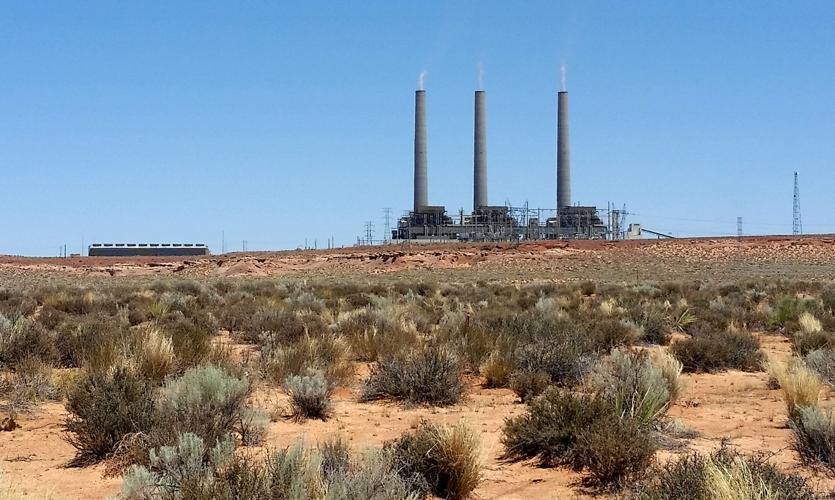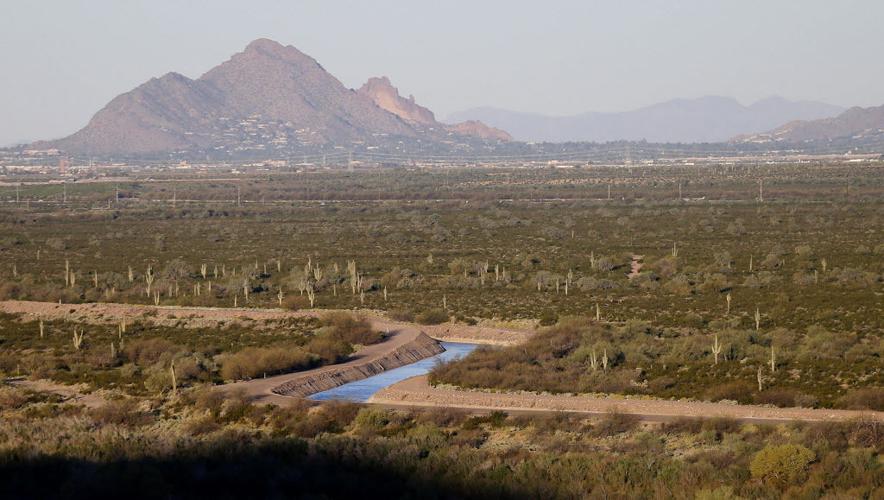Tucson Water customers will see their water bills rise more slowly in the future if the Navajo Generating Station shuts down as its owners plan.
The reason is that the Central Arizona Project, which sells drinking water to Tucson and other Arizona cities, will see a big savings in its energy costs to pump water if the plant closes on schedule at the end of 2019.
A new report from CAP says closing the Navajo station would save CAP $26 million per year. That will reduce its charges to city, farm and tribal water customers.
Because Tucson is CAP’s biggest urban customer, these savings will filter down to Tucson Water customers by the early 2020s, utility officials say. They’ll come in the form of water rate increases that would be less than previously planned.
OPPOSITE OF WHAT
officials used to say
This is a big shift from what experts used to say. For years, CAP officials warned that a shutdown of the Navajo Generating Station would trigger a spike in customers’ water bills. CAP led the charge to keep the plant open and to fight environmentalist efforts to clamp very strict emission regulations.
Now, CAP’s position has shifted because of a meteoric flip in the comparative costs of coal-fired and natural-gas fired power.
Because of the growth of fracking and horizontal drilling for natural gas, gas prices have dropped sharply since 2014. Coal-fired power, long cheaper than gas, is now more expensive.
These changes frame the continuing debate over the Navajo plant near Page. That price shift is why four utilities running Navajo — including Tucson Electric Power, Salt River Project and Arizona Public Service — decided last week to stop operating and shut down the plant by the end of 2019 if other operators haven’t taken over. Its supporters hope to keep Navajo open under new operators to save its 1,000 jobs.
CAP’s declining costs for natural gas compared to coal was a factor in the utilities’ decision, said SRP spokesman Scott Harelson.
Until now, the CAP has been inextricably tied to Navajo. Navajo was approved, designed and built in the late 1960s into the 1970s as a vehicle to pump project water uphill from the Colorado River to Phoenix and Tucson. The CAP is Navajo’s largest customer besides the utilities, taking about 15 percent of the plant’s total load of 2,250 megawatts.
Navajo was also designed as a “cash register” for CAP so it could sell surplus power to raise money for repaying part of the canal project’s $3.6 billion federally fronted construction cost.
But now, “Based on current market conditions and forecasted market conditions, ... it appears that the NGS costs will be more expensive than market costs for a number of years going forward,” said Tom McCann, CAP’s assistant general manager, in an interview this week.
A new CAP report predicts the gap between Navajo and open market energy costs will grow steadily until 2021, shrink for two years and start rising again.
Asked if this situation will ever change, McCann replied, “I don’t know.”
lower rates don’t
mean
reduced bills
CAP’s lower rates won’t reduce Tucson Water customers’ bills. But they will allow the utility to scale back already planned rate increases of about 7 percent annually for the next few years.
The average Tucson Water home-owning customer paid $32.35 monthly in 2016 to use nearly 6,000 gallons per month, the utility says.
If Navajo closes, the annual increases starting in the early 2020s could be more like 5 percent, “based on what we know today,” Tucson Water Director Tim Thomure said this week.
The utility could save as much as $5 million per year if CAP doesn’t buy Navajo power, he said.
Overall, if Navajo closes, all Arizona cities that buy water from the project would save a total of $9.3 million, the new CAP report shows.
Indian tribes using project water, including the Tohono O’Odham Tribe near Tucson, would save $9.6 million.
Farms buying CAP water would save $2.2 million. Beyond that, the energy savings would ease $5.2 million that CAP now charges other water users to subsidize and hold down farms’ water rates to keep them in the project.
“There are definitely consequences of shutting down the plant. If it lowers our water costs, it’s good news for Tucson. That needs to be balanced against what the societal impacts would be from closing down the power plant and closing down the coal mine that feeds it,” Thomure said, referring to the plant’s jobs and investment in Northern Arizona.






